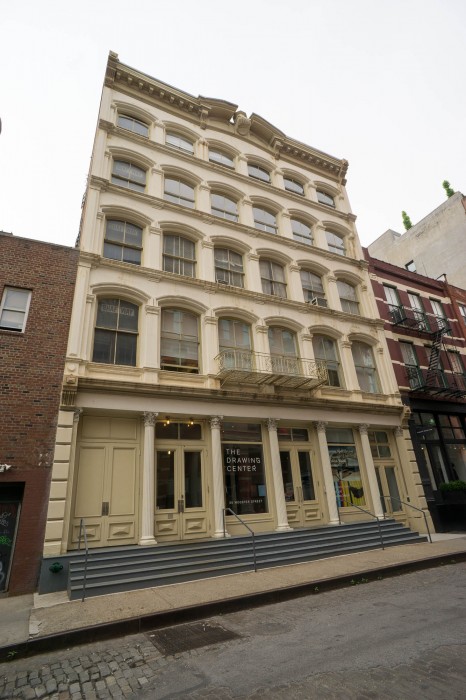
(June 4, 2014) A visit to The Drawing Center in New York City, the only museum of its kind dedicated to the art of drawing.
Back on June 4th, while visiting home for a few days, I traveled to New York City for a day. While I had the great fortune to catch up with two friends, one a fellow, former Fulbrighter, Michael Newmark and the other a fellow RISDroid; Seo BoYoung; I was also looking forward to visit The Drawing Center, an institution dedicated to the fine art of drawings and illustrations. Particularly for my visit, I saw that they were doing a retrospective of an architect/artist I had never heard of, but, quite frankly, wished I knew of when I was doing my Masters' Thesis: Lebbeus Woods.
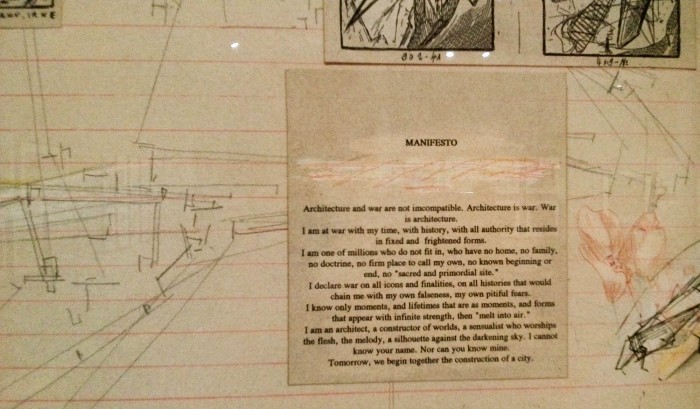
Lebbeus Woods' Manifesto
Lebbeus Woods, who passed away in 2012, once worked for Eero Saarinen before investing his time in the art of conceptual and experimental architecture. A culmination of this devotion to, if you will, "fantasy" architecture, led to the establishment of his own initiative, the Research Institute for Experimental Architecture in 1988. The introduction to the retrospective, "Lebbeus Woods, Architect", at the Drawing Center, which was curated by the San Francisco Museum of Modern Art, is most telling on Woods' life story:
...Woods, who sadly died as planning for this exhibition was under way, had an enormous influence on the field of architecture over the past three decades, despite the few built structures to his name. Working deftly with pencil on paper, and on intricate models with collaborators, he created complex worlds-at times abstract and at times explicit-that present shifts, cycles and transience within the built environment... His architecture is emblematic of a period of experimentation and theory that emerged in the discipline in the 1980s. He once said, "Maybe I can show what could happen if we lived by a different set of rules."
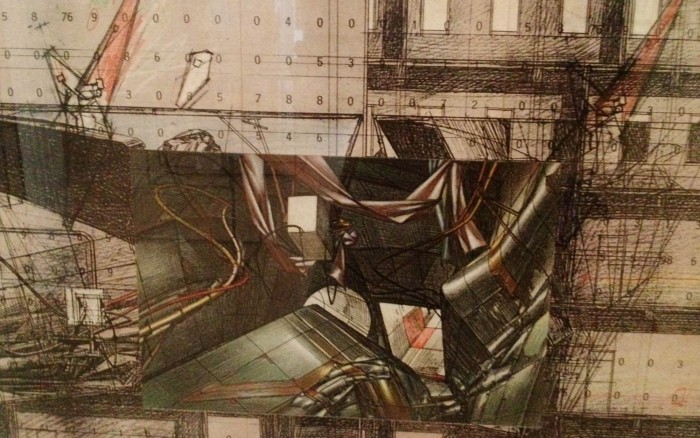
Part of the "Berlin Free Zone", 1990, in which Woods was proposing a network of "freespaces" that would connect old spaces into new ones.
The photos I took of the exhibition (I used my phone camera) does not do his work justice, but, like all things art, a visual reproduction of the real thing isn't just the same. The illustrative studies here are really tight, with expressive detail in light and shadow. In a way, these are studies and final works wrapped in one, but fall short of the kind of drawing happenstance that Carlo Scarpa was known for.
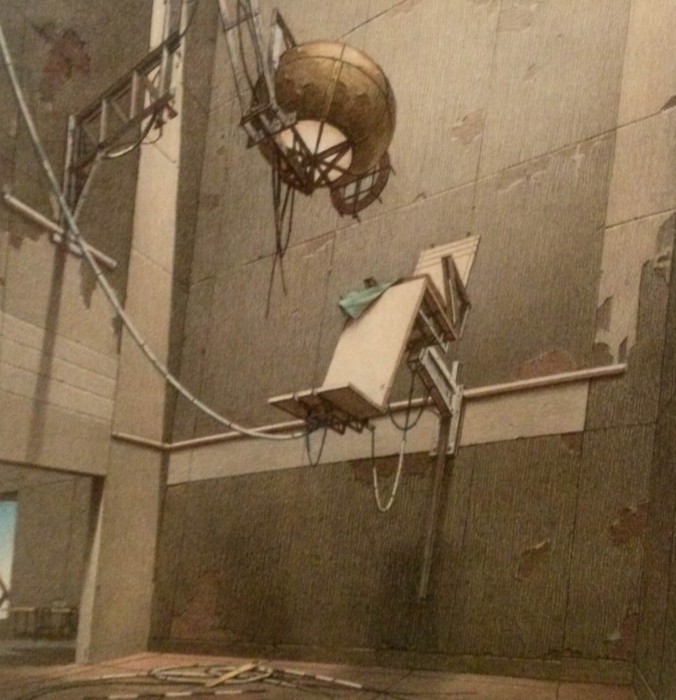
The attention to detail in this colored pencil work is astounding.
But, this was not just an exhibition into fantasy science fiction and architecture. Woods actually studied the spaces as would an architect, and drew sections and analytical drawings that make his constructions believable. The engineering would be an extreme challenge, but, it could just work.
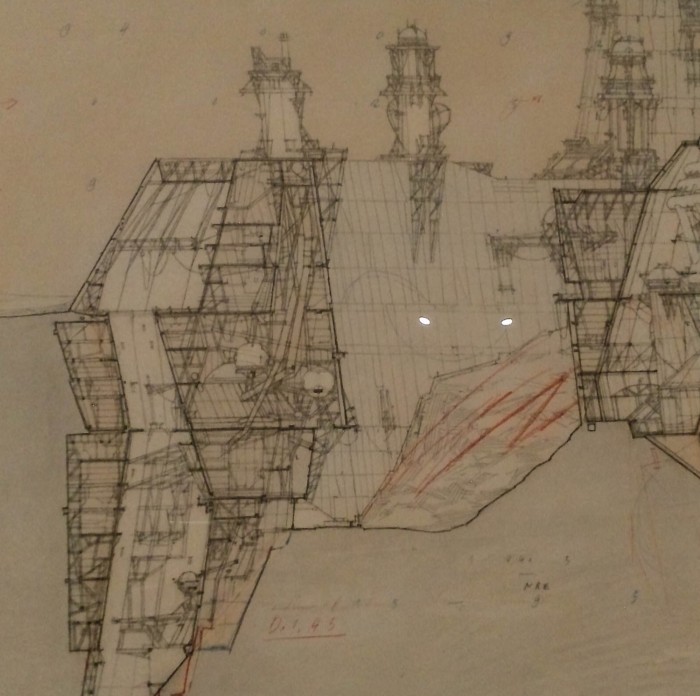
Woods' drawing for "Centricity", whereby he studied how to apply physics to architecture.
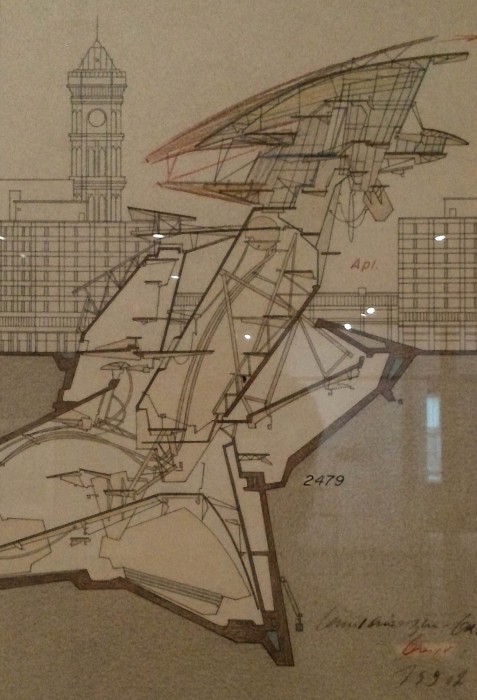
Part of "Underground Berlin", 1998, Pastel, graphite, colored pencil on paper.
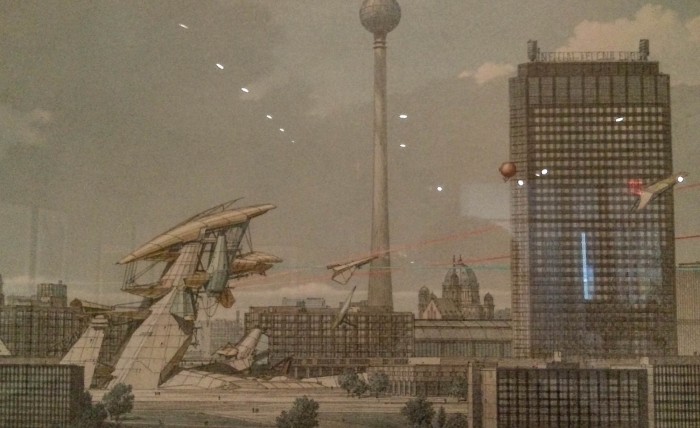
"Created in 1988, Underground Berlin anticipates the then-imminent political reunification of Germany. In these drawings, Woods conceives of the occasion as a universal shift that activates a dynamic reformation of seismic. gravitational, and electromagnetic forces-physical echoes of the political and economic changes above ground."
I find Lebbeus Woods a fellow kindred spirit, because his interests were similar to my own, in terms of discovering how one can mutate a space and how material transformation can define it.
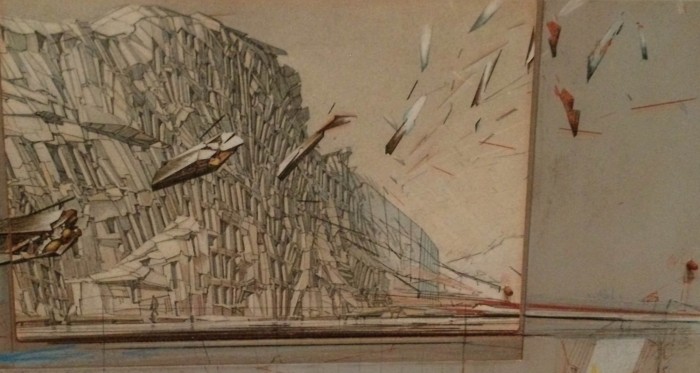
Part of Woods' series on architecture and war. But, this building is more of a testament to war than a representation of decay and destruction.
Wherever buildings are broken by the explosion of bombs or artillery shells, by lack of maintenance or repair, by fire or structural collapse, their form must be respected in its integrity, embodying a history that must not be denied. In their damaged state they suggest new forms of thought and comprehension, and new conceptions of space that confirm the potential of the human to integrate with the building, to be whole and free outside of any pre-determined, totalizing system. The new spaces of habitation constructed on the existential remnants of war and natural disaster do not celebrate the destruction of an established order, nor do they symbolize or commemorate it. Rather they accept with a certain pride what has been suffered and lost, but also what has been gained. --Lebbeus Woods, 1997

War and Architecture
I am much more interested in the secret life of the city, those things which can maybe happen out of sight or in a kind of unseen way, strange things...that are unexplainable, even justifiable in terms of any sort of convention of society or certainly of architecture. I decided to bring to the city some...spaces that didn't exist already. Not knowing what to do has never stopped me, so I just simply began by introducing some strange configurations, some kind of foreign presence entering the city. I saw these structures, a kind of tectonic manifestation, a kind of form that was not quite yet architecture, not something inhabitable... I began to call these freespace structures. I know that free is a very difficult word to use, but I meant it in this sense: free of any kind of predetermined meaning or usefulness. Really they are meaningless and useless spaces so that there's no way that we know from our former experience [how] these might be used. --Lebbeus Woods, 1992
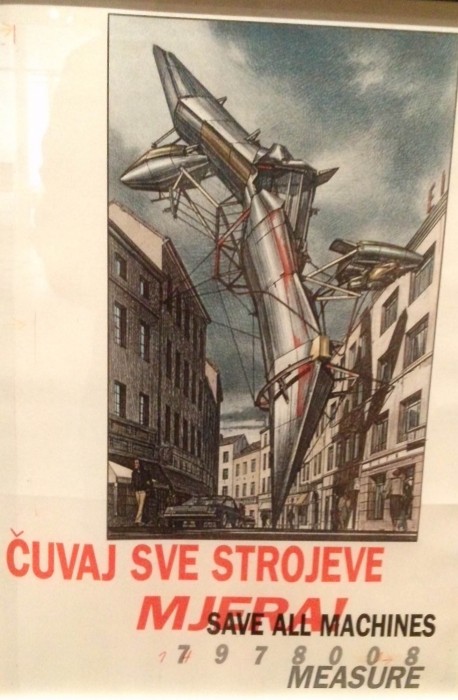
Zagrab Free Zone, 1991
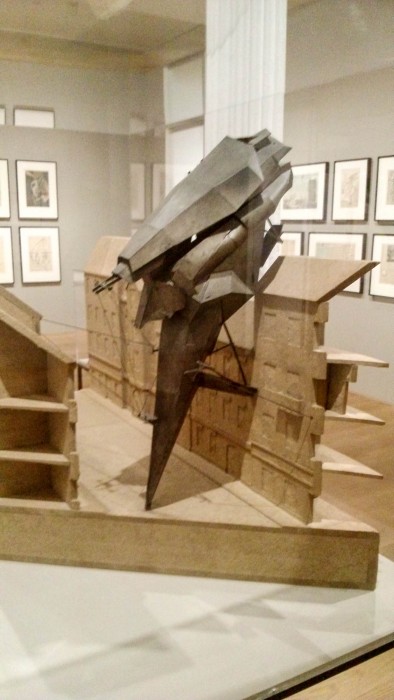
Zagreb Free Zone, 1991, model